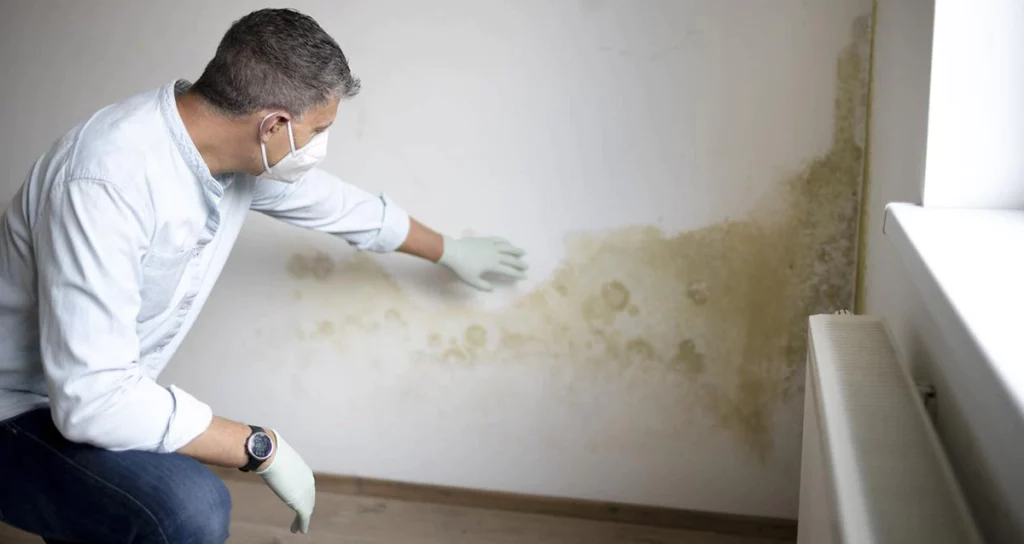A functioning sewer line is essential for the proper functioning of your home’s plumbing system. However, over time, sewer lines can deteriorate due to various factors, leading to a range of issues that can cause inconvenience and potential health hazards. Recognizing the signs of a broken sewer line is crucial to addressing the problem promptly and preventing further damage. In this comprehensive article, we will explore the common broken sewer line symptoms and discuss the necessary steps for repair and replacement.
Contents
Signs Your Sewer Line is Broken
Detecting a broken sewer line early is essential to prevent further damage and costly repairs. If you’re wondering how do you know if your sewer line is broken, there are several telltale signs to watch out for:
There are Moldy Areas on the Walls and Floors
One of the most noticeable signs of a broken sewer line is the presence of mold and mildew on your walls and floors. The excess moisture escaping from the sewer line can create a conducive environment for mold growth. If you notice damp or moldy patches, especially in areas near plumbing fixtures, it’s a strong indication of a sewer line issue.

Slow Drains
Slow drainage in sinks, tubs, and toilets is a common symptom of a broken sewer line. When a sewer line is compromised, water and waste materials cannot flow freely, leading to sluggish draining. If you’re experiencing slow drains in multiple areas of your home, it’s time to investigate the health of your sewer line.
Weird Smell
A distinctive, foul odor resembling sewage is a clear sign that your sewer line might be broken. This broken sewer line smell is often most noticeable in the vicinity of drains and can be particularly unpleasant. If you detect an unusual smell in your home or yard, it’s essential to consider the possibility of a sewer line issue.
Crawlers and Critters
Broken sewer lines can attract pests and critters due to the presence of waste materials. Rats, roaches, and other pests are drawn to the damp and unhygienic environment created by a compromised sewer line. If you notice an increase in pest activity around your property, it’s worth investigating the status of your sewer line.
Sinking Concrete Slabs
If your property has concrete pathways or slabs, a broken sewer line beneath them can lead to sinking or uneven surfaces. The wastewater escaping from the damaged line can erode the soil, causing structural issues in your outdoor spaces.
Cracks in Your Foundation
A broken sewer line can contribute to soil erosion around your home’s foundation, leading to cracks in the foundation itself. These cracks can affect the stability and structural integrity of your house. If you observe any cracks in your foundation walls, it’s advisable to consider a sewer line inspection.
Sewer Line Repair and Replacement
When you’ve identified the symptoms of a broken sewer line, it’s essential to take action promptly to avoid worsening the situation. Depending on the extent of the damage, you may need to consider either repair or replacement options. Here’s what you need to know:

- Patch Repairs: For minor cracks or localized damage, patch repairs can be a suitable solution. Plumbers can use specialized materials to seal the affected area, preventing leaks and restoring the integrity of the sewer line.
- Hydro Jetting: Hydro jetting involves using a high-pressure stream of water to clear out debris, blockages, and buildup within the sewer line. This method can help improve the flow and function of the line without the need for extensive excavation.
- Pipe Lining: Pipelining, also known as trenchless repair, is a non-invasive method that involves inserting a resin-coated liner into the damaged pipe. Once in place, the liner hardens and creates a new, structurally sound inner lining within the existing pipe.
Repairing a broken sewer line involves fixing specific sections or patching up minor cracks. Replacement, on the other hand, entails removing the old sewer line and installing a new one. It’s crucial to consult with a professional plumber to assess the situation accurately and determine the best course of action.
In conclusion, recognizing the symptoms of a broken sewer line is vital for maintaining the functionality and hygiene of your home. If you experience any of the mentioned signs, it’s recommended to seek professional assistance to address the issue promptly and effectively. Regular maintenance and timely repairs can help prevent extensive damage and ensure the smooth operation of your plumbing system.
FAQ about the symptoms of a broken sewer line
Early signs of a sewer line issue include slow drains, gurgling noises, and sewage odors in your home.
Minor sewer line issues shouldn’t be ignored, as they can worsen over time and potentially lead to more extensive damage.
If you’re unsure about a sewer line problem, it’s wise to contact a professional plumber for a thorough inspection and accurate diagnosis.



